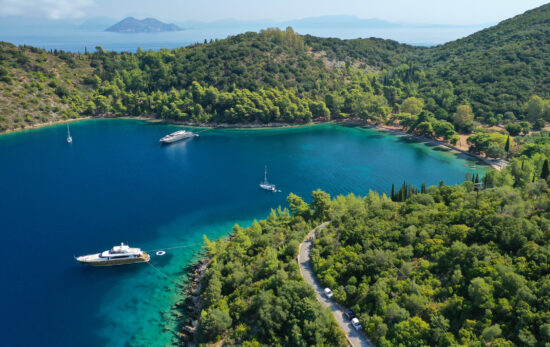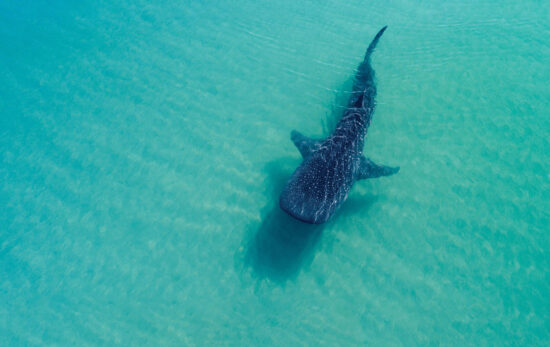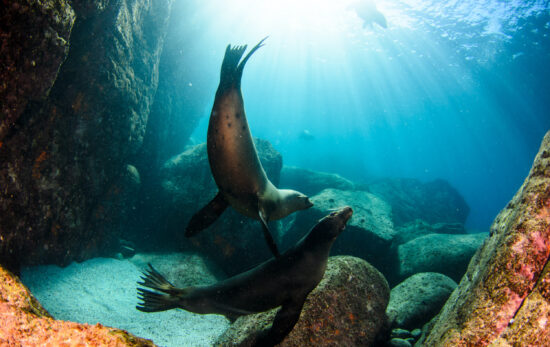The drive from Cabo San Lucas to the mobula viewing area, along the placid Sea of Cortez, takes about two hours on the well-paved Highway 19 followed by a short journey down a sandy, village road. A select number of divers may lament the change of pace from Cabo’s sumptuous resorts, but I find myself in awe of the sheer emptiness of the landscape, although I’m quickly reminded by our driver that the desert is anything but empty. There are dozens of species of cactus growing around us, many of which aren’t found anywhere outside of Baja California. But we aren’t here to study the desert wildlife. We are shuttling along this desert highway, on our way to assist in a citizen science mission. Our goal: help save the mobula rays of Baja California Sur.
Dive Ninja Expeditions and its founder, Jay Clue, created the Mobula Ray Citizen Science Expedition in order to offer a front row seat to one of Baja’s greatest natural shows, the mobula ray aggregations that appear in the Sea of Cortez every spring and fall. Not only do the expeditions put snorkelers and freedivers in the heart of the action, they also provide the opportunity to get involved in the important research being done by Mobula Conservation.
Beyond the sandy fields, our sea-front home for the next five days comes into sight. Set on a long, sandy stretch of beach, the complex is made up of a series of casitas designed in the traditional style. The buildings’ rosy tones reflect the vibrant show the sun puts on every morning, rising above the calm waters of the bay before us.
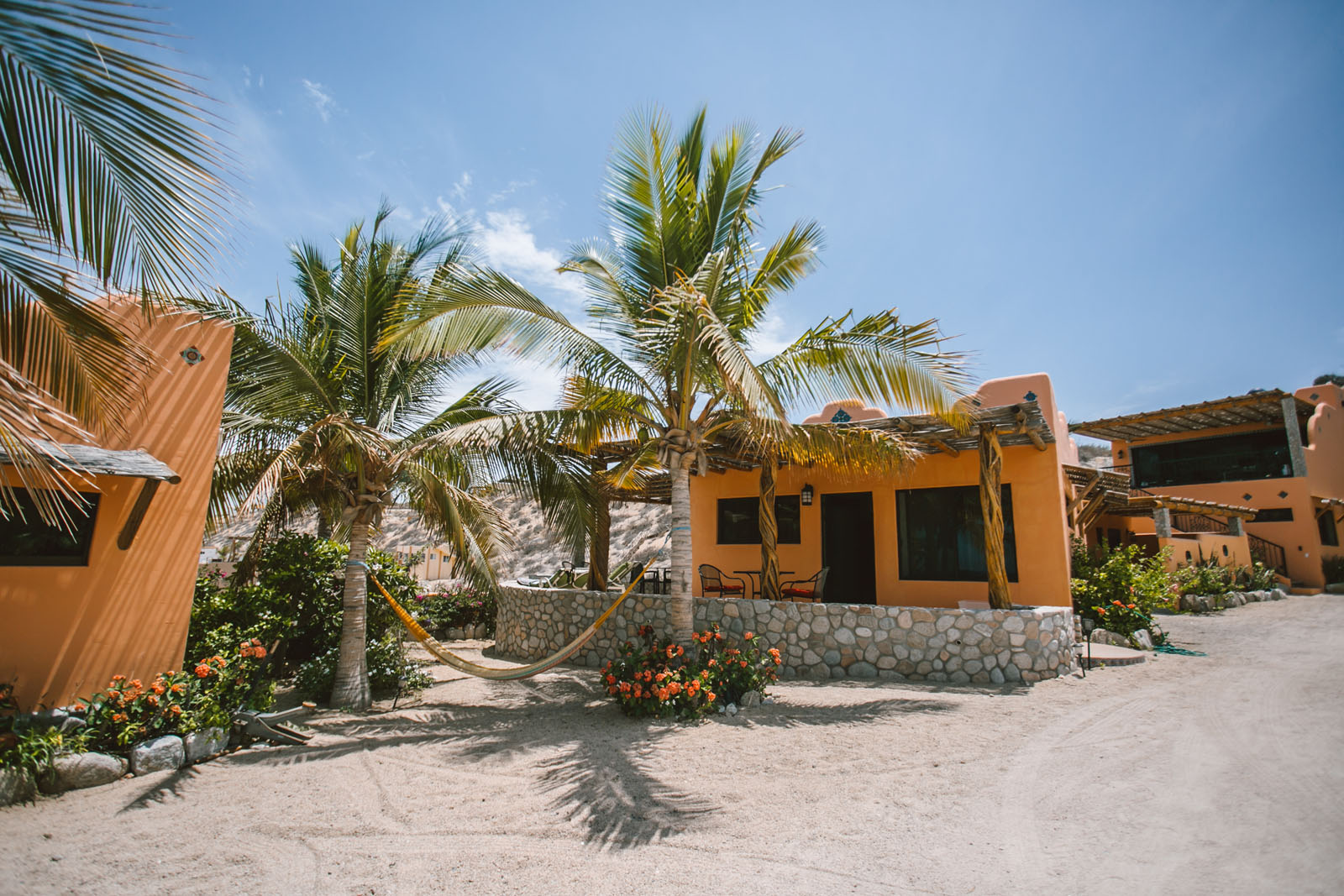
Donna Schechter, the expedition leader, gives us a tour of the grounds and an introduction to our itinerary for the next several days. She starts by introducing Rueben, our chef for the trip, who promptly hands us a gorgeous bowl of guacamole, several salsas and a fresh salad made with locally sourced ingredients. When I signed up for a wildlife expedition, I didn’t expect five-star cuisine at every meal, but that’s exactly what Rueben delivered day and night. He even sent gourmet snacks with us on the boat.
Although the food and accommodation of the Mobula Ray Citizen Science Expedition, not to mention the very ability to jump in the water with thousands of mobula rays, is exceptional enough to warrant a visit, this trip is all about the conservation experiences. This is an ethos inspired by Dive Ninja’s founder Jay Clue, an avid underwater photographer, conservationist and explorer. It was Jay who first decided to create a tourist activity around the mobula rays in this area. And, while the fact that he started what is now an extremely popular activity in a growing destination is fascinating, that he wanted to ensure each trip gives back to these enigmatic creatures rather than harming their environment is even more admirable.
Back at our gorgeous, seaside casita, Donna continues with her introductions, bringing us to Marta D. Palacios, one of the founders of Mobula Conservation and an all-out rock star in Mexico’s marine biology community. Marta, who originally hails from Spain, is currently pursuing her PhD, and in the process, she has already documented the first mobula ray nursery ever discovered as well as defined guidelines for night diving with mobula rays. On the Mobula Ray Expedition, we’ll be assisting Marta over a three-day period with her research, which aims at creating a code of conduct for mobula ray aggregation tourism activities, assisting in the formation of new protected areas, introducing fishing gear modifications and providing alternatives to fishing to the local community.
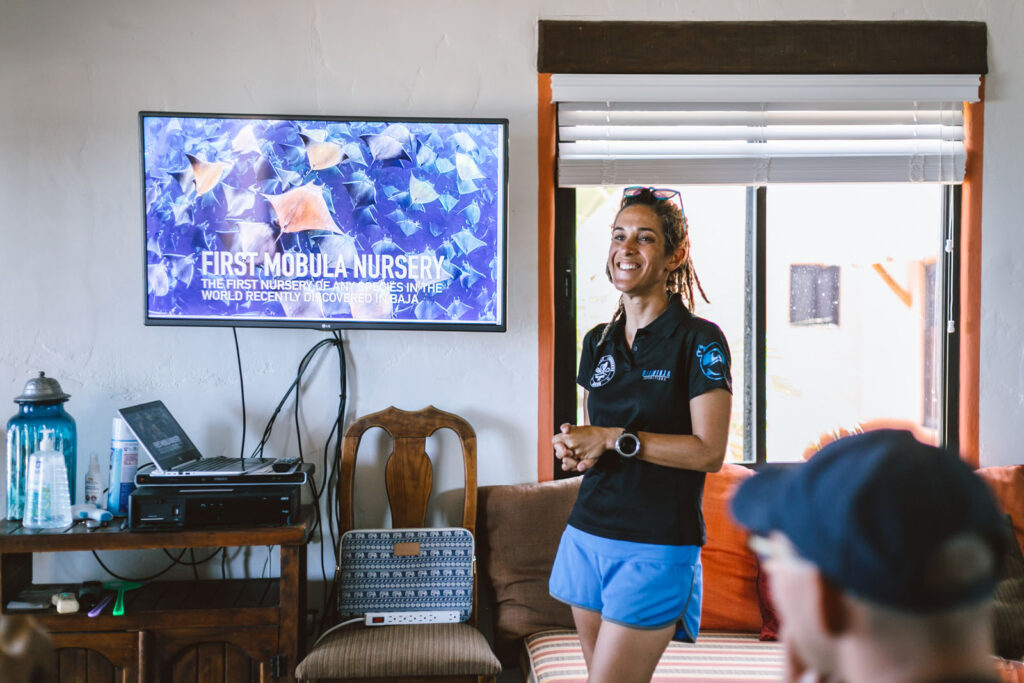
Our first full day on the expedition starts with an explosive sunrise, full of yellows and pinks, over a promising bay of reflective water. Armando, our boat captain who has been cruising these waters his entire life, is en route, his boat practically flying over the glass-like surface. He banks left, guiding the bow onto the shore, allowing our group to throw our wetsuit, fins and cameras aboard before hauling ourselves over the edge, giddy with the excitement ocean-lovers often feel before a day in the water. Although the mobula rays of Baja are no longer a secret, we’re the only boat around. This trip hasn’t yet become a mainstream excursion, although it will surely gain in popularity soon.
Within minutes, Armando veers off course, leaving us to wonder what he’s spotted. It’s not long before we see whale spouts in the distance. A pair of humpbacks are also enjoying the protection of the bay. We stop and watch for a few minutes. The whales are resting at the surface, seemingly unbothered by our presence. Then, suddenly they dive, showing us their tails, as if waving goodbye.
Alas, these waters are as alive as Jacques Cousteau would remember, but we’re still on the hunt for the stars of the show. Luckily, Marta and Armando have some of the most practiced eyes for finding the now famous fevers of mobula rays. Although no one is 100% sure why the mobula rays aggregate in this area, Marta and other scientists believe it’s because the bay offers protection from predators and for mating. The work of Mobula Conservation will hopefully one day add scientific backing to these theories.
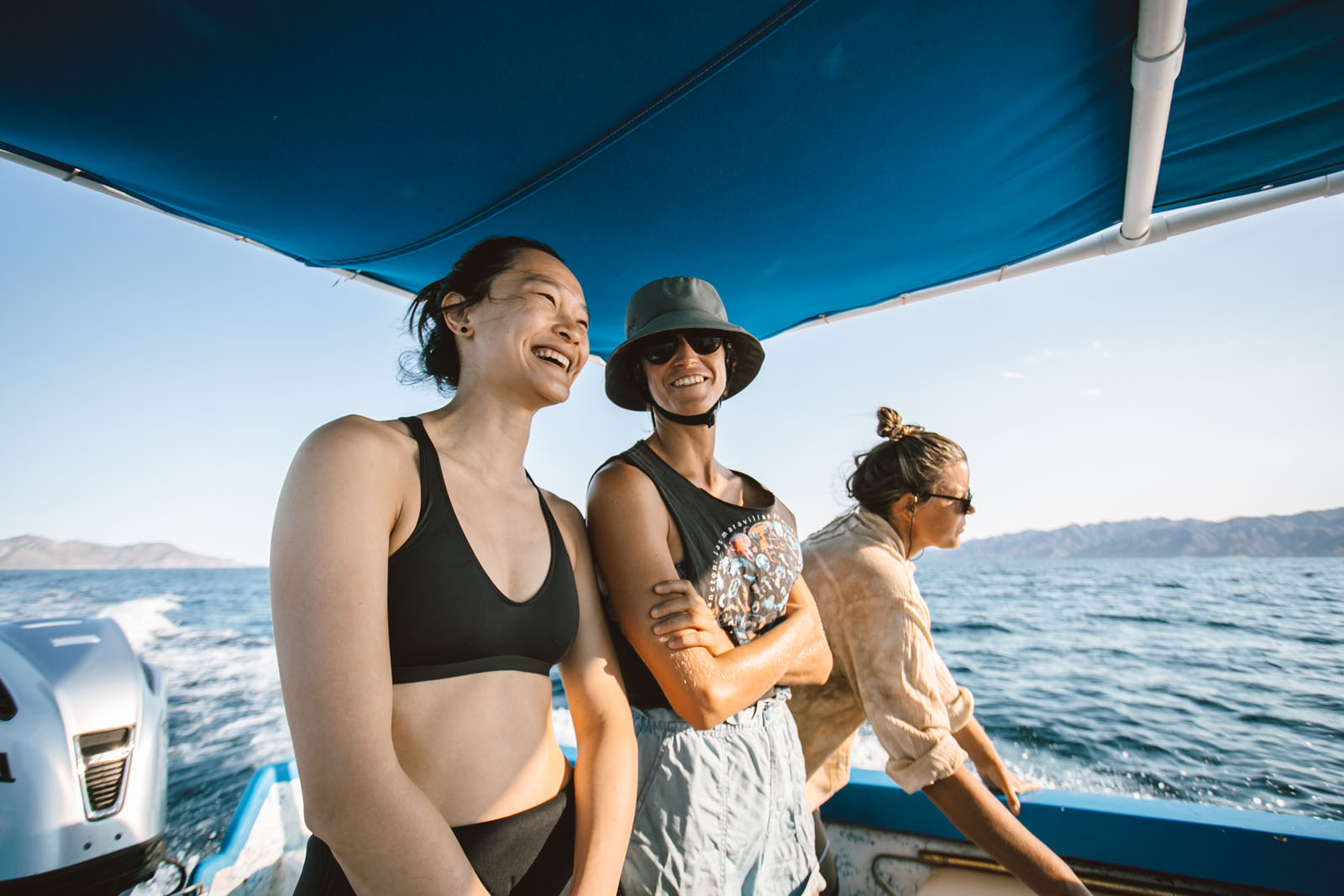
It’s not long until we come across a massive group of mobula rays. Before we even jump in, it’s evident that there are hundreds of rays gliding below us. The stellar visibility allows us a peak into the depths while we’re still ensconsed in the sunny, dry interior of the vessel. As quickly and quietly as possible, we don our snorkeling gear, entering the water without a splash. Marta has already shown us how to swim on our sides to minimize the disturbance of the water. A little luck and good technique mean we can have an incredible interaction with this group of rays. For nearly an hour, we swim around the edges of the group, watching as some of the rays peel off, eventually finding their way back to the safety of the fever after untold adventures away from the crowds.
Some of our group are even lucky enough to see a lone hammerhead stalk the rear of the mobula ray fever, perhaps searching for an easy meal. These aggregations aren’t without predators, everything from sharks to orcas have been known to use the rays as a food source.
And, even as we prepare to exit the water following our exhilarating swim, we’re graced with a sighting of a single Mobula mobular, the largest of the mobula ray species found in the Sea of Cortez. In contrast to the Mobular munkiana, which swim together in the aggregations, Mobula mobular looks somewhat similar to a manta ray and is usually spotted solo or in small groups of only a handful of individuals. It’s Marta, with her keen and almost supernatural wildlife spotting abilities, who prompts us to once again put our masks under the surface, guiding us to spot the ray dancing just a few meters below.
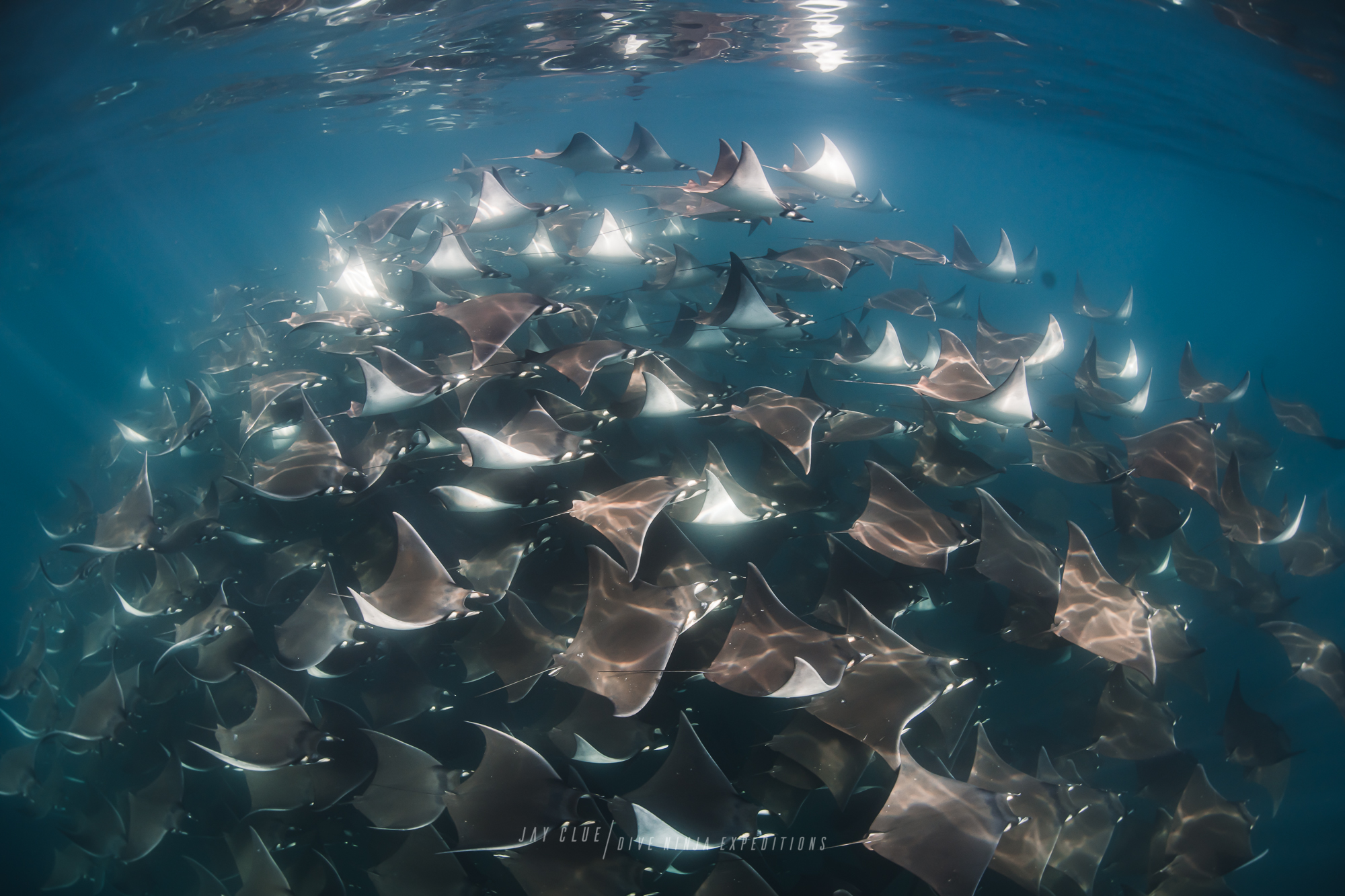
Predictably tired and hungry after a full six hours on the water, we head for our casitas, eager for the meal Reuben has ready for us. After filling my belly with salad, tacos and tropical fruits, I head out for a stroll along the beach, searching for the natural hot springs between the shore and the sea. Locals have built stone semi-circles to contain the warm water just off the beach, creating the perfect ‘bath’ to follow a whirlwind day. Unfortunately, on my way back to the casitas, I come across four mobula ray carcasses. These unlucky individuals have likely been discarded by fisherman who either accidentally caught the rays in their nets or have taken the fish to sell as mantarraya, a popular taco filling in the area, which is supposed to be made with the flesh of stingrays. Unfortunately, the white flesh of the mobula ray is nearly indistinguishable from that of its seafloor-dwelling cousins.
Upon my return, Marta is waiting to give us the first of her many fascinating lectures about mobula ray ecology and conservation. Afterwards, she heads out to document the mobula rays on the beach. Her goal isn’t to villainize the local, artisanal fisherman, but rather to educate them regarding the species. Most are receptive to this knowledge and happy to assist in the conservation of a species that has now brought fame and tourism spending to their small, fishing village.
Over the course of our 5-day expedition, we experience the best of everything, from snorkeling excursions, to oceanic safaris, and, of course, multiple swims with mobula ray aggregations. But, I’m told that each year, these expeditions get more involved, including excursions personalized to each group.

Chef Reuben prepares a spectacular meal for the expedition guests. | Image courtesy of Alexa Fernando
On our last night, Reuben outdoes himself with a surf and turf dinner. The stars shine brightly down on us, as we relive the excitement of the past few days over a bottle of wine. Retiring from the dining room, I wander down to the beach. Here, I find blankets and beach chairs laid out. I sit down to enjoy a quiet moment alone with the lapping sea at my feet. By the light of the moon, I spot the island across the bay, and I wonder exactly what lies under the crystalline surface in between. Sharks, rays, orcas, dolphins, whales, sea lions or just huge schools of fish, it could be any of the above. This is the ‘Aquarium of the World’, after all. I stay for what seems like hours, listening for the belly flops of the mobula rays while searching the sky for the Big Dipper and Orion’s Belt.
The Dive Ninja’s Mobula Ray Expedition is a first-of-its-kind experience, not unlike a sea-based safari and similar to what you’d find in Sri Lanka if you want to spot jaguars or northern India if you’re on the hunt for snow leopards. This is a singular experience where luxury, conservation and adventure intersect, making for a surprising yet inspiring departure from spring break-ready Cabo San Lucas. Furthermore, this is proof that a citizen science expedition rooted in a singular behavior of a singular species can not only be profitable but also connect divers, freedivers and snorkelers with Baja California’s wild landscapes – and maybe provide protection to those same vistas for decades to come.
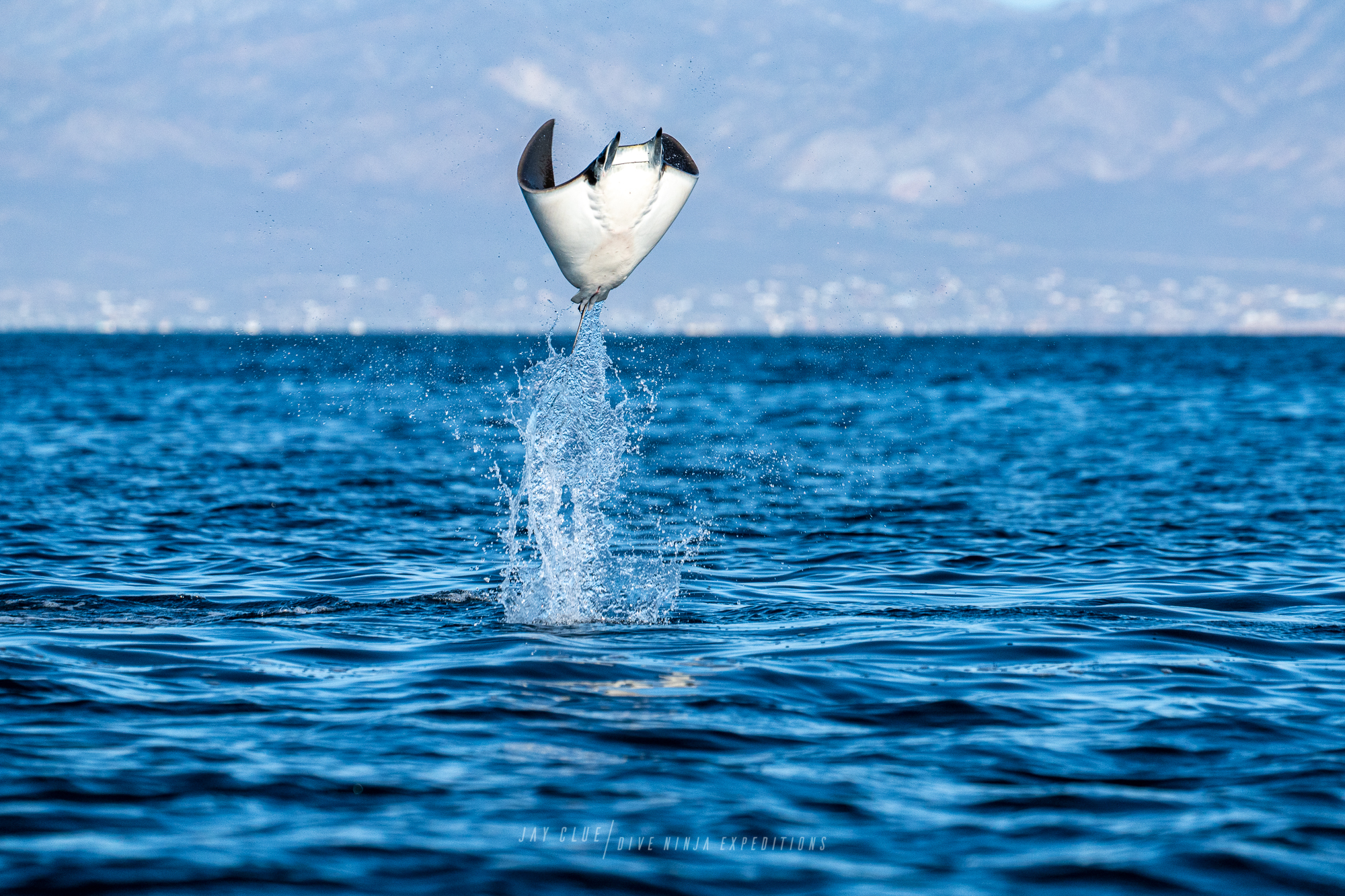
To learn more about Dive Ninja’s Mobula Ray Expedition, which is available as a 5-day or 8-day citizen science experience, click here. For more information about learning to freedive in order to experience Baja California to the fullest, check out the PADI Freediver courses by clicking here. Or to help with conservation efforts around the world from the comfort of your home, consider taking the PADI Save the Ocean pledge and becoming a PADI Torchbearer by clicking the button below.

